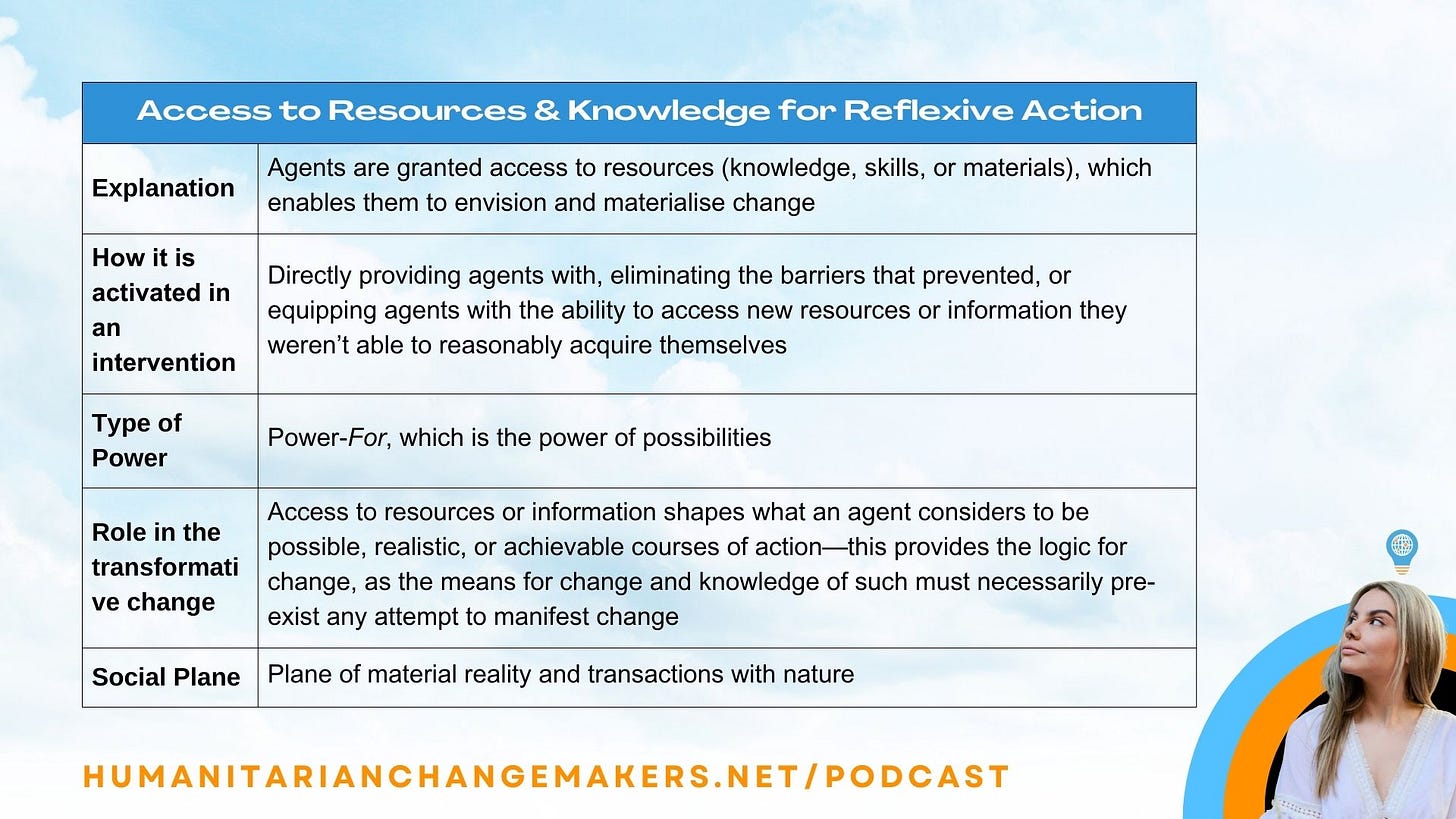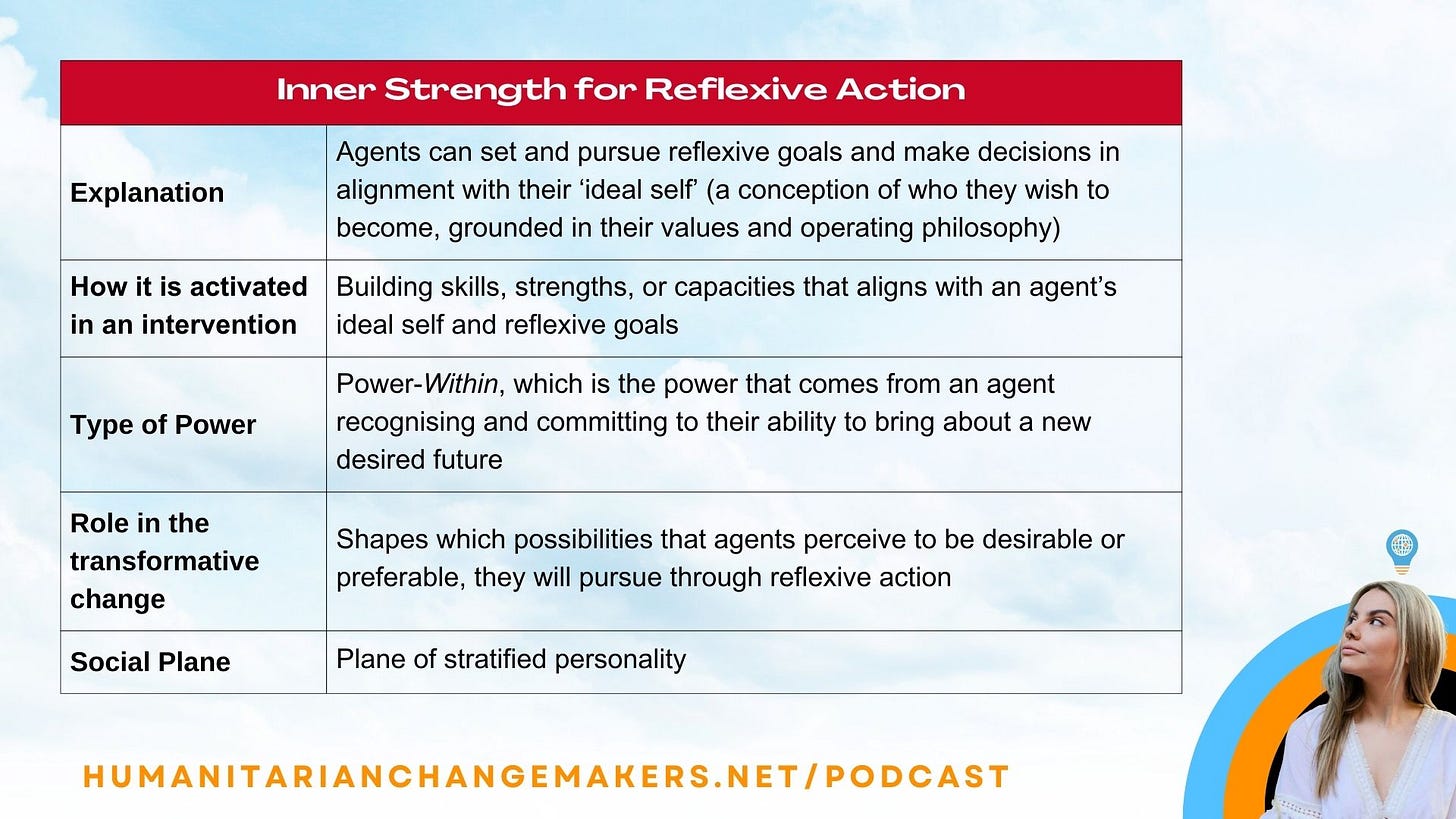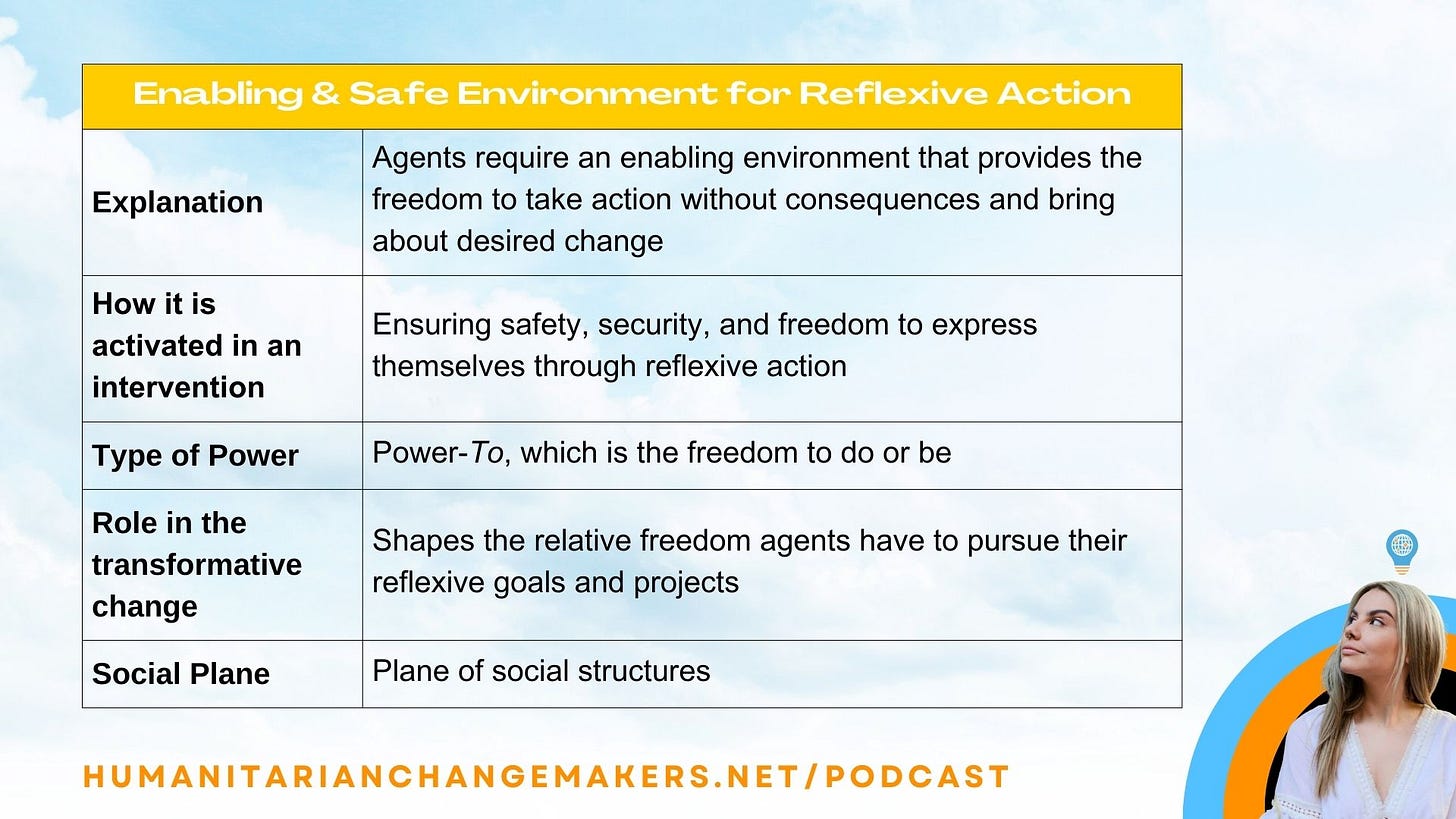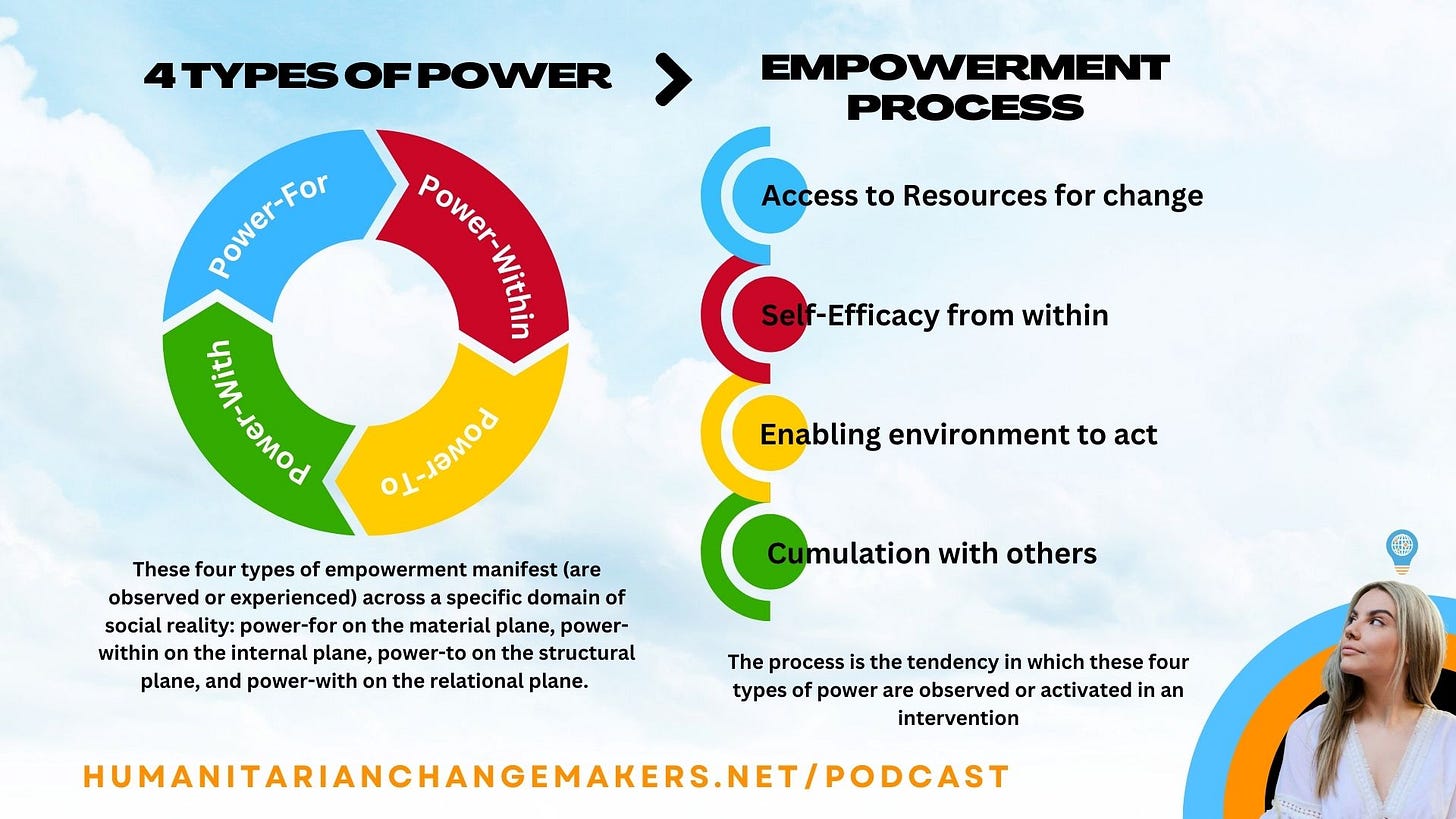The Four Types of Power: How Empowerment Drives Transformative Change
018. Sharing the framework I developed during my doctoral research for assessing women's empowerment
Empowerment is a term that carries immense weight in the world of social change. It is not just about granting individuals or communities the means to survive but enabling them to thrive. In this post, we explore the four types of transformative power—power for, power within, power to, and power with—and how they interact to drive meaningful change. These concepts underpin a holistic understanding of empowerment, informed by research into women’s empowerment and its broader implications.
What Is Empowerment?
At its core, empowerment is the process of building transformative power. It is more than just addressing inequalities or securing justice. Empowerment allows individuals and communities to harness their agency and direct it towards achieving meaningful, reflexive goals. It is a dynamic, ongoing process of becoming more powerful in ways that align with one’s values and aspirations.
To understand empowerment, we need to look at the four types of transformative power, which correspond to the four ways humans exist in the world: materially, psychologically, structurally, and relationally.
1. Power For: Material Potential
Power for refers to the potential to create new opportunities and realise possible futures. This type of power is grounded in the material reality of human existence. It encompasses access to resources, infrastructure, and the physical conditions that enable action.
For instance, in the context of rural development, providing women with mobile phones can create new opportunities by expanding access to information, markets, and communication networks. However, the availability of such resources is only the starting point for empowerment.
2. Power Within: Psychological Strength
Power within is about inner strength—the confidence, self-belief, and personal vision necessary to pursue transformative change. It aligns with the concept of reflexivity, the ability to critically engage with one’s circumstances and make intentional decisions about one’s future.
For example, when women in development contexts envision a better future for themselves, this vision is shaped by their values and aspirations, rather than external expectations. Developing power within means fostering self-awareness and motivation, enabling individuals to act on the opportunities presented by power for.
3. Power To: Structural Freedom
Power to focuses on the freedom to act and be within a given socio-cultural and institutional framework. This type of power is influenced by the structural conditions—laws, norms, and social systems—that shape individual and collective possibilities.
Intersectionality highlights how structural inequalities affect different social groups’ ability to access this freedom. For example, a woman might have access to resources (power for) and the confidence to use them (power within), but societal norms or discriminatory policies might restrict her ability to act on her aspirations.
4. Power With: Collective Strength
Power with emerges through collaboration and solidarity. It represents the collective power that grows when individuals or groups come together to share resources, ideas, and strategies. This type of power is crucial for scaling impact and achieving broader social change.
An example of power with is the formation of women’s cooperatives or advocacy groups, which amplify individual voices and drive systemic change. By pooling resources and support, these collectives create a feedback loop that reinforces the other three types of power.
Empowerment as a Process
Empowerment unfolds as a process across these four dimensions. It often begins with access to resources (power for) and progresses to building confidence and motivation (power within). Structural conditions (power to) determine the feasibility of action, while collective efforts (power with) amplify the impact.
For instance, in a healthcare setting, empowerment might involve providing patients with access to essential services and knowledge (power for), educating them about their health and rights (power within), ensuring equitable healthcare policies (power to), and fostering community networks to support health initiatives (power with).
Why the Four Types of Power Matter
These four types of power offer a comprehensive framework for understanding and measuring empowerment. They emphasise that transformative change requires more than isolated interventions. True empowerment occurs when all four dimensions are addressed, enabling individuals and communities to pursue their goals and contribute to broader societal transformation.
Empowerment, in this sense, is not an endpoint but a continuous process. It is about building power in ways that align with the reflexive goals and aspirations of individuals and communities, driving change that is not only transformative but sustainable.
By recognising the interconnectedness of power for, power within, power to, and power with, changemakers can design interventions that foster genuine empowerment. Whether in rural development, healthcare, education, or advocacy, this framework provides a roadmap for creating lasting, meaningful change.






